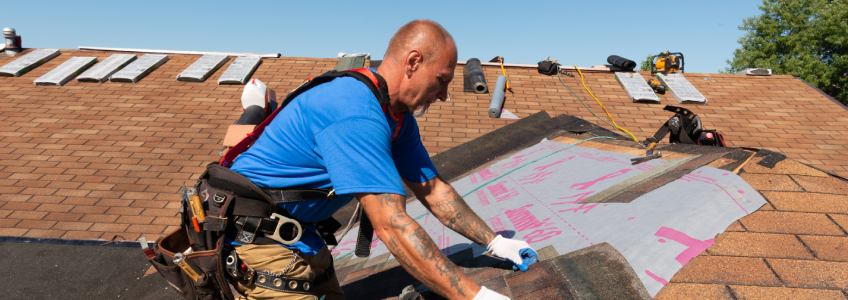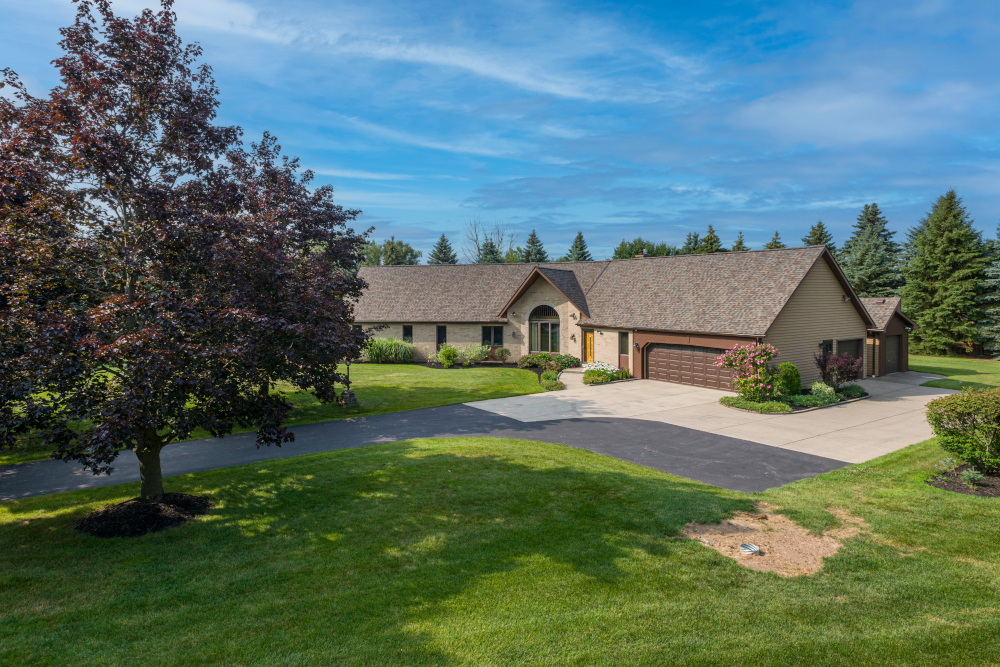Most homeowners aren’t going to bed thinking about their roofs. In fact, it’s usually their last home improvement priority. But know this, your roof is your first defense against the weather. Not only does it keep your family safe and dry, but it also boosts your curb appeal.
If you’ve noticed your roof is looking slightly worse for wear, you might consider balancing on a ladder and taking matters into your own hands. But you’ll need the right tools, materials, and skills to take the DIY route.
So, whether you’re dealing with a minor leak, damaged shingles, or a more extensive roofing issue, we’ll equip you with the knowledge to choose the right roofing materials.
The Role of Quality Materials in Roof Repair
A sturdy roof doesn’t happen magically, it takes proper material selection and careful preparation. The right materials can be the difference between a temporary patch-up and a long-lasting, reliable repair.
Here’s why selecting quality modern roofing materials matters.
- Durability and Longevity: High-quality roof materials are designed to withstand harsh elements. When you use subpar supplies, your repairs might not last as long, and you could find yourself back up on the roof sooner than you’d like.
- Effective Water Protection: Suitable roofing materials let your repair form a watertight barrier. This is especially crucial because water damage can lead to several problems, including mold growth, structural damage, and insufficient insulation.
- Compatibility: Different types of roofs require different materials. For example, shingle roofs need asphalt or wooden shingles, while flat roofs may require EPDM rubber or modified bitumen. Using materials compatible with your roofing enables better functionality.
- Energy Efficiency: Some roofing materials, such as reflective coatings or cool roofing materials, can improve your home’s energy efficiency, leading to lower energy bills and a more comfortable living space.
Identifying Repair Needs
Before you dive into selecting roof material types, it’s crucial to first assess the extent and type of damage at hand. After all, you need to know what’s wrong to make it right.
- Accurate Solution: Roof problems can range from minor leaks to major structural damage. Once you know what you’re dealing with, you can choose the most appropriate materials and techniques to address the problem effectively.
- Cost-Efficiency: You don’t want to replace your entire roof when a simple patch-up will do, right? Likewise, you don’t want to underestimate the problem. Accurate assessment helps you allocate your budget.
- Safety First: Roofing can be dangerous work. Climbing up there without knowing what you’re doing can end in a tragedy. We suggest you assess the damage beforehand to plan for safety and avoid unnecessary risks.
Common Roof Issues
1. Leaks
Leaky roofs are probably the most common problem homeowners face. They’re often caused by damaged shingles, cracked flashing, or deteriorated sealants. You need to identify the source of the leak before selecting roof patching materials.
2. Shingles
Shingles can get damaged by wind, hail, or just plain old age. Missing or cracked shingles must be replaced, and you’ll want to match the new batch to the existing one to maintain your roof’s integrity.
3. Sagging or Buckling
If your roof is sagging or buckling in certain areas, it could indicate a more significant structural issue. You can estimate the extent of the damage and determine whether it’s a localized problem or a widespread issue.
4. Flashing Problems
Flashing is the material used to seal joints and seams in your roof, like around the chimneys or vents. When flashing fails, it can lead to leaks.
Types of Roofing Materials and Their Applications
The material you choose for your roof repairs can bring the exterior of your home to the next level. Because there are tons of roofing materials available out there, we’ve compiled a quick guide on some of the most common ones.
1. Asphalt Shingles
Almost 90% of American homes use asphalt shingles, because they are affordable and easy to install. Besides, shingles can last up to 30 years and can be recycled to make pavement.
2. Metal Roofing
Metal roofs are incredibly weather-resistant, lightweight, sleek, and recyclable. Available in two types (panels and shingles), they come in aluminum, copper, stainless steel, and zinc.
3. Tile and Slate Roofing
Clay and concrete tiles add texture and elegance to a roof. Flat, ribbed, or scalloped clay tiles are quite heavy and should only be installed by a professional. Concrete tiles are slightly less expensive than genuine clay, but they’re just as hefty.
If you want your home to be the talk of the neighborhood, opt for slate tiles. They’re colorful, stylish, fire-resistant, and sustainable.
4. Flat Roofing Materials
Flat roofing materials, such as EPDM rubber, TPO, or modified bitumen, are commonly used in commercial buildings, industrial facilities, and some residential properties with flat or low-slope roofs.
Factors to Consider in Material Selection
Some homeowners think they can choose a roof repair material based on aesthetics alone. However, it isn’t just about beauty. Sure, curb appeal matters, but your roof also contributes to everything that makes your home livable.
With this in mind, let’s dive into three factors you should consider when choosing residential roofing materials.
1. Compatibility
First things first, the roofing material must be compatible with the type of roof you have. For example, asphalt shingles are suited to steep-slope roofs, while flat low-slope roofs often require EPDM rubber or TPO.
Additionally, you should consider how the new material blends with existing roof components like flashing, underlayment, and ventilation systems. The closer the match, the less likely you are to face future issues.
2. Climate and Environment
Your local climate plays a vital role in material selection. Account for factors like temperature extremes, heavy rainfall, snow, wind, and sun exposure. Figure out how the material reacts to the elements before making your decision.
3. Budget
Just because a roofing material is priced high doesn’t mean it’s top of the line. Talk to local roofing suppliers and experts for recommendations and reviews. Also, when you’re planning a roof repair budget, factor in labor costs, permit fees, and any unexpected charges alongside the material costs.
Preparation Steps
Ready to fix up your roof? There are a few things you’ll need to take care of to ensure the job goes smoothly and safely.
1. Gathering Tools and Equipment
For starters, make sure you have the right safety equipment, including a sturdy ladder, fall protection gear, non-slip shoes, and a hard hat. Depending on your specific repair, you might also need tools such as a roofing hammer, utility knife, roofing nails or screws, a pry bar, and a roofing nail gun.
2. Measuring and Calculating Quantities
Start by measuring the area of your roof that needs repair. This will help you calculate how much material you’ll need. Remember to factor in overlap to ensure you have enough to cover the entire roofing area.
3. Safety Measures
Nearly 500,000 people are treated for ladder-related injuries each year. Needless to say, you don’t want to be part of this statistic. Make sure your ladder is stable on level ground. Use appropriate fall protection gear and follow safety guidelines for working on a roof.
Check the weather forecast before starting. Avoid repairing your roof in rainy or windy conditions, as it can be dangerous. If you have family members or neighbors, let them know you’ll be working on the roof to ensure their safety as well.
Roof repair jobs are best left to professionals. We’d recommend hiring a local roof repair company like W.C. Rott & Son to take on the job for maximum efficiency.
The Bottom Line
There you have it! Remember, the right roofing repair material can help your home stand tall against wild weather, keep you comfortable, and even save you money on those energy bills.
But it’s not just about the here and now. Think long-term. Consider the lifespan of your roofing material and how it’ll perform over the years. Sometimes spending a bit more upfront can save you bundles in the future. And if you’re ever in doubt, don’t hesitate to consult with a roofing pro like W.C. Rott & Son!
Ready to get your roof back in top-notch shape? Look no further! Contact W.C. Rott & Son, your trusted roof repair experts. We’ve got the skills, experience, and dedication to fix your roof right. Call us now to schedule your roof repair and experience the W.C. Rott & Son difference.





